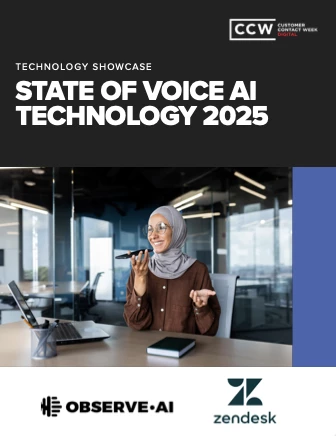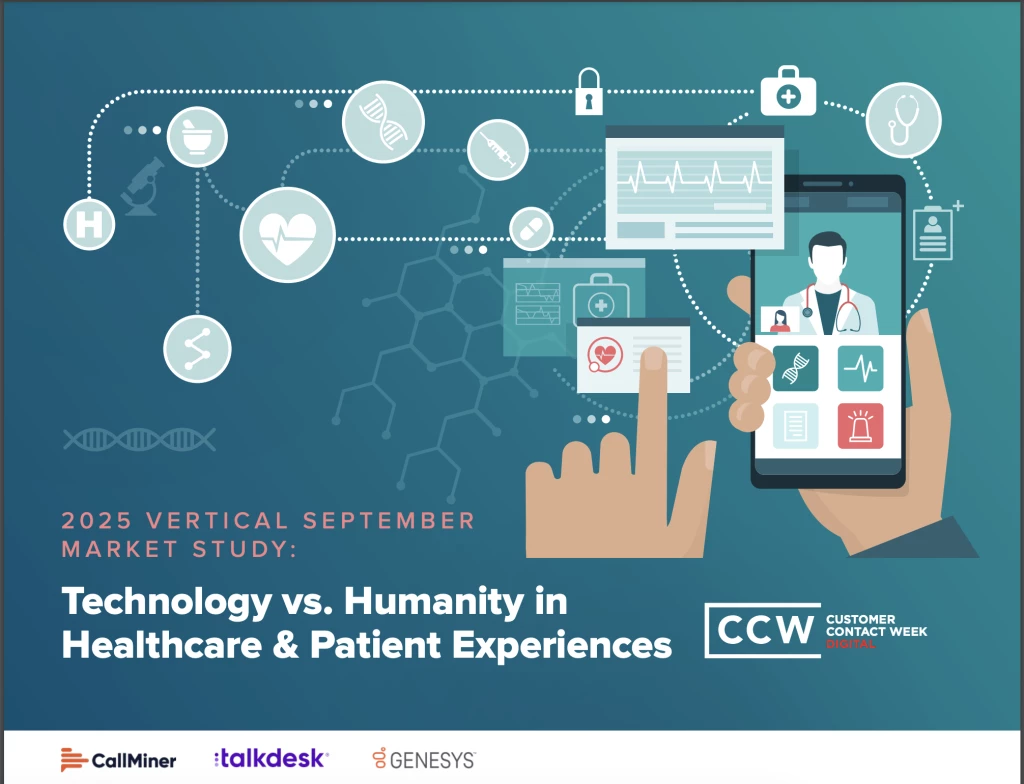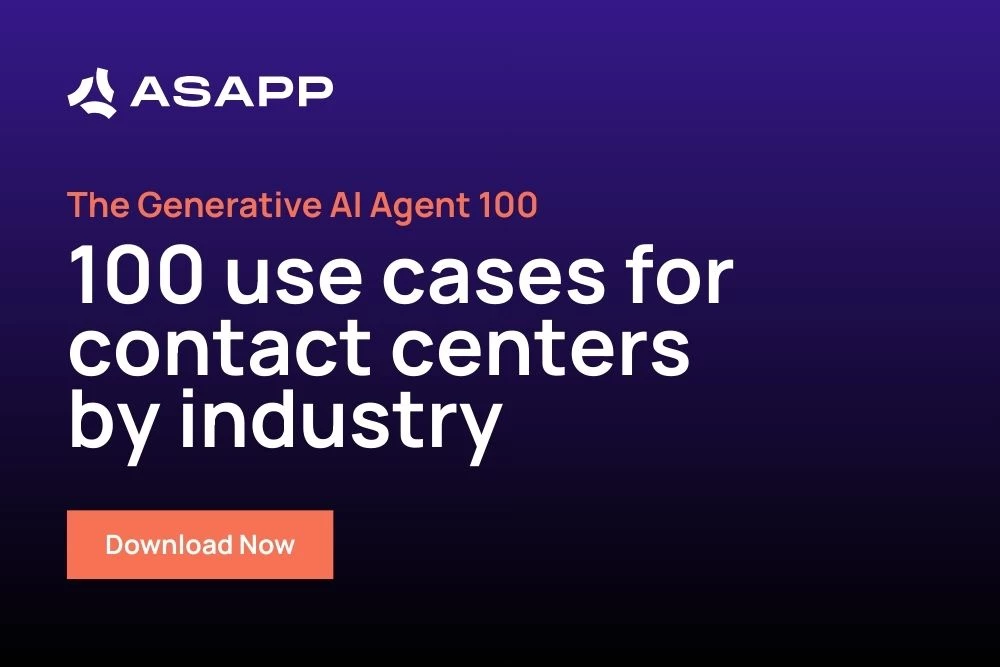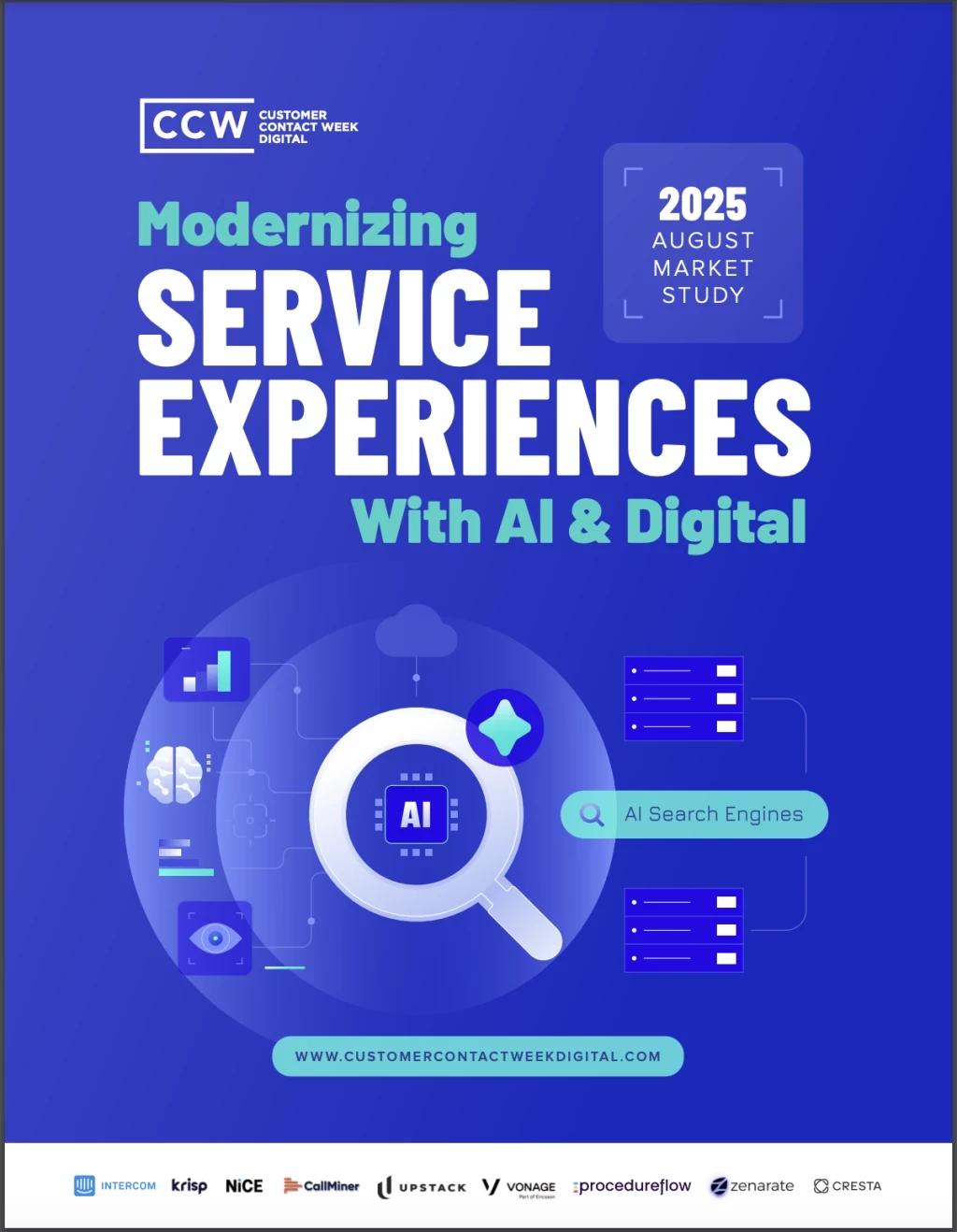4 Key Strategies for Embarking on Your AI Journey
Insights for Achieving Long-Term Success with AI
Add bookmark
The AI environment is incredibly robust. With so much sophisticated technology on the market, it is both an immensely exciting but equally daunting moment for contact center leaders. After years of inefficient interactions, complex legacy systems and increasingly difficult workflows, organizations can now see the light at the end of the tunnel. But implementing AI effectively can often feel just as complicated.
AI offers enormous potential to innovate and improve operations, particularly when leveraged with intention. As organizations adapt this mindset, it is critical to outline a path for a productive implementation and a strategic roll out that will support key outcomes.
According to CCW Digital research, as few as 18% of companies are currently at the real-world implementation stage in their AI deployment. This leaves plenty of room for organizations to begin a more deliberate and thoughtful journey. To begin, contact center leaders must outline their business goals to articulate a guide for long-term success.
FreeClimb, an industry leader in AI-powered customer care, offers customers a safe and comprehensive environment to embark on their AI journey. Joseph Carey, Vice President of Customer Experience for FreeClimb, and Mariano Tan, CEO and President of Prosodica, share insight on how contact center leaders can better prepare for their AI implementation and build a framework that encourages continuous improvement.
Here we outline 4 tips for embarking on your AI journey.
1. Understand the Long-Term Goal
Technology can be exciting. When we see new tools enter the market it can be tempting to dive straight in. When considering the benefits and looking at the potential outcomes, the future seems promising.
However, every organization has its own unique needs. What works for some, might not work for all. And budget constraints, organizational buy-in and complicated roll outs are all real challenges that can arise when leaders don’t think through their investments.
Leaders today are very much aware of the importance of these decisions, according to CCW Digital research 52% of contact center executives are currently picking some priority use cases and seriously deploying only the most relevant AI solutions.
Joseph Carey shares, “We encourage our clients to start by defining their business goals, prepare data to drive model performance, and form teams to pilot the AI applications. A best practice recommendation is to start with the end in mind. Know what you want to get out of AI and what the expected benefit is of that result before you start throwing AI technology at the problem.”
Understanding what your business needs are and building an AI journey that will lead the organization to that end goal is critical. Without a clear endpoint, it becomes impossible to even measure the success of an initiative.
With a defined outcome in mind, leaders can begin sourcing tools that align with these needs and progress through their journey with confidence.
2. Know When to Leverage AI, or Not
At a time when so many conversations are centered around AI, it becomes important to know the boundaries of when automation will be effective and when it’s entirely unnecessary. Regardless of how powerful and exciting a technology may be, there are still areas throughout the customer journey and agent workflow that don’t require automation.
For a business looking to make intentional, productive changes, it is necessary to pinpoint these moments and build an experience that addresses customer needs, but doesn’t reinvent the wheel.
Mariano Tan states, “It is critically important to know what problems are better suited to AI. We find that good results are often attainable through more traditional approaches. That is not to say that you should defer AI initiatives, but rather to say that you should target them towards problems that are not easily solvable through traditional means.”
If your organization has an effective chatbot that meets customer needs, it may not be necessary to focus your efforts on implementing generative AI just because it is trending. If personalization is more of a value-driver, leaders should lean into technology that can curate a more enhanced view of the customer and guide a more contextual conversation.
Carey adds, “If you have set many goals, you want to further prioritize those that have the most tangible and rapid impact. And make sure to build on a platform that can support your evolving needs as you push further down your list. For example, you can start by using AI to transform raw operational data into actionable, revenue-driving insights, then evolve towards using those insights to drive automated actions.”
3. Curate a Safe Environment for Continuous Improvement
When choosing to work with a solution provider, it is critical to form a partnership. This should be a relationship bolstered by trust and consistent collaboration. To form this withstanding connection, organizations should look to source technology vendors that prioritize features allowing for continuous improvement and human-centered feedback loops.
With human in the loop technology, organizations benefit from a consistent focus on enhancement. Rather than just be left to their own devices, leaders have the ability to test their technology, improve responses and meet evolving standards.
At FreeClimb, this is pivotal. Mariano Tan shares, “Keep a “human in the loop” when first deploying AI. Even a partner that is committed to security and privacy can fall prey to the unintended side effects of a broad-reaching technology like AI. For many organizations, this means deploying AI for internally facing applications first and then moving to externally facing use cases. The contact center provides an ideal laboratory for AI since a trusted employee is already in the middle of the transaction.”
By leveraging the technology internally first, organizations will understand the impact of the technology and uncover points of friction before introducing it to the customer. This encourages a culture of continuous improvement and allows leaders to innovate without posing any risks to the experience.
Carey shares one way leaders can leverage this strategy, “An AI feature that responds to customer inquiries can initially be set up to listen to a live agent interaction and prompt sample responses to the agent. The agent can indicate which is the optimal response while simultaneously conveying that response to the customer. Over time, you can ease the human out of the communication loop letting the customer interact directly with the AI, but by then, countless feedback events will have helped the AI tune its results to a more trusted state.”
This ensures that the technology is optimized for the customer, leaving no room for gaps or mishaps after the initial implementation.
4. Prioritize the Human-Element While Innovating
One of the greatest fears surrounding AI today is the loss of a human touch. Although users can see the amazing benefits and potential of these tools, they still maintain that a human-led experience can never be replaced.
Within many of these tools, however, exists human-centered features that allow for a more dynamic and empathetic experience. Understanding how to leverage these components, and sourcing solution providers that prioritize these values, is critical.
FreeClimb reiterates the importance of an AI foundation that is guided by human intervention. With guardrails in place to recognize potential friction points and offer a human-touch, organizations can reap the benefits of AI while also offering customers a human led interaction when needed.
Carey states, “Using Prosodica, we provide listening technology that can act as a safety net when first deploying AI. For example, when launching conversational AI, we can listen to the customer interacting with the automation, detecting friction points and non-verbal indications of frustration. If desired, we can even signal the AI in real-time if human factors suggest a customer experience risk. This can cause a change in the AI’s path, or even trigger an easy transfer to a human agent. With Prosodica’s patented systems capable of analyzing the non-verbal elements of communication, we add a human element to the monitoring and management of AI.”
As customers recognize that they will always have access to a human support system when needed, they instantly feel more comfortable engaging in automated interactions. In fact, 67% of customers stated that they would be more comfortable using self-service when they can escalate to a human agent whenever they desire.
This added support gives customers the confidence that they will receive the best possible outcome, no matter the journey. When looking to implement AI, leaders must be mindful of customer preferences and give them the value of a human-centered experience throughout.
The AI Journey is Not Fixed
We introduce the idea of an AI journey because the process is not linear. To remain competitive, companies must work to continuously iterate and improve experiences. This level of agility requires a consistent focus on improvement and end-to-end innovation.
Joseph Carey concludes, “At FreeClimb, we believe in the unique power of voice interactions to create more expressive, more intimate, and more efficient interpersonal interactions. Our solutions combine the power of emerging AI technology with the scale and performance of our communications platform for smarter, more successful conversations. From basic network services to state-of-the-art IP telephony, to innovative real-time analytics, FreeClimb technology makes millions of voice interactions better every day.”
As we look to the future, it is this kind of technology that is poised to transform contact center operations. By implementing technology that powers smarter conversations and promotes continuous improvement, organizations will be in the position to exceed expectations.
In the end, organizations must embark on their AI journey with confidence. By prioritizing the right use cases, keeping a defined end-goal in mind and working tirelessly to improve, leaders will continue to see success with the technology.
































